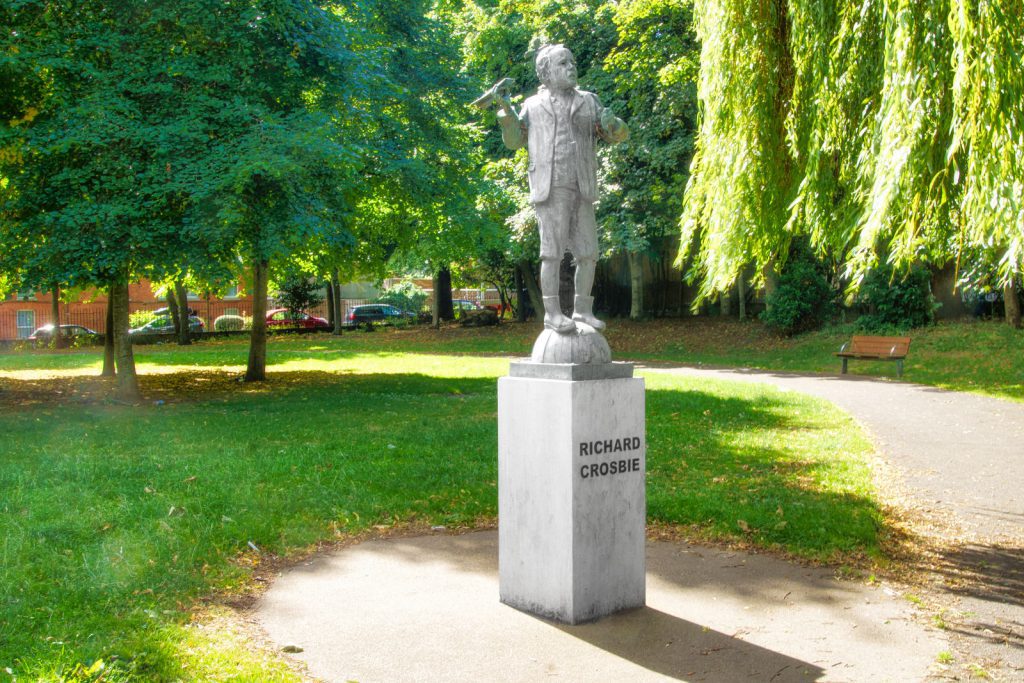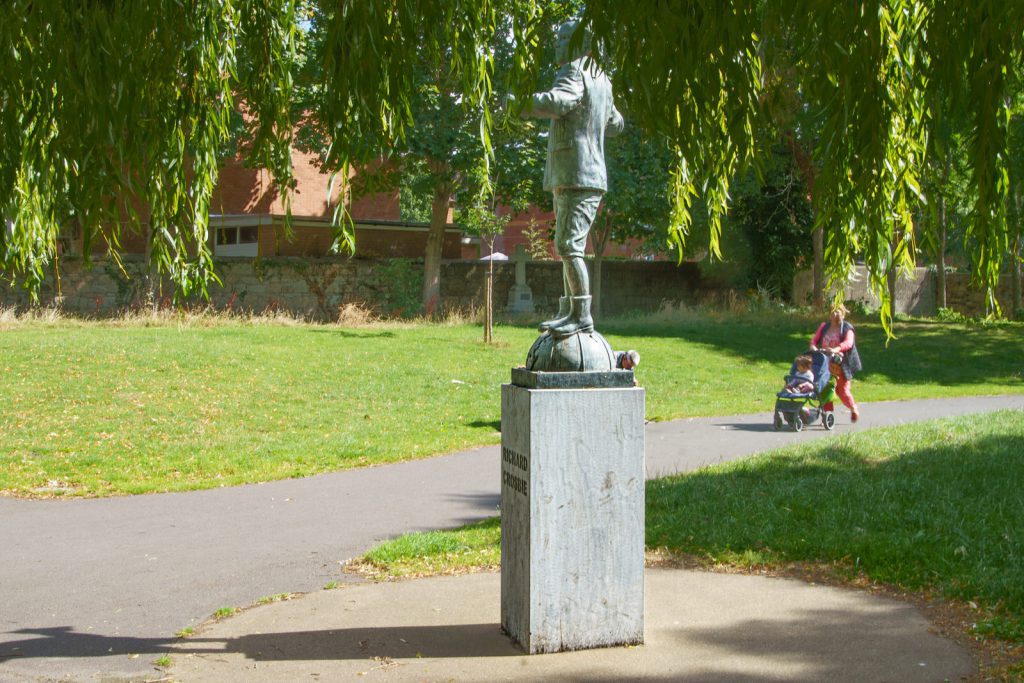STATUE LOCATED IN RANELAGH GARDENS
This statue, which was designed by leading Irish artist Rory Breslin, depicts Richard Crosbie’s youthful curiosity and many of the items displayed on the bronze reflect an airborne theme. The sculpture, which is adorned with various images, gives a sense of the showmanship, extravagance and ornamentation that was evident on the actual day in January 1785. It is designed to be a fitting commemoration to Richard Crosbie and his redoubtable curiosity and determination while also being a timeless piece of art in its own right.
On 19 January 1785 at 2.30 pm, Crosbie launched, from an exhibition area at Ranelagh Gardens his Grand Air Balloon and Flying Barge in which he intended to cross the Irish Sea.
Late in 1784, Crosbie exhibited his “Aeronautic Chariot” at an exhibition at Ranelagh Gardens in Dublin. Made of wood covered with cloth, designed and built by himself, the Chariot resembled a boat, with rudder and sails, intended to enable navigation in the air, reducing reliance on wind direction. His first flight took place on 19 January 1785 at Ranelagh, witnessed by more than 35,000 people. The balloon and chariot were beautifully painted with the arms of Ireland supported by Minerva and Mercury, and with emblematic figures of the wind. Crosbie’s aerial dress “consisted of a robe of oiled silk, lined with white fur, his waistcoat and breeches in one, of white satin quilted, and morocco boots, and a montero cap of leopard skin”.
Crosbie intended to cross the Irish Sea, but as darkness fell early in the winter evenings, he decided to land at Clontarf. He attempted a channel crossing on 19 July 1785, (defying a ban on balloon flights by the Lord Mayor of Dublin because the population of the city was spending long periods gaping at the sky instead of working), but came down halfway across due to a severe storm, and was rescued by the Dun Laoghaire barge Captain Walmitt, which was following his progress.
On Sunday, 28 September 2008 in Ranelagh Gardens, in conjunction with the Ranelagh Arts Festival, Councillor Mary Freehill (deputising on behalf of the Lord Mayor) unveiled a sculpture to commemorate Richard Crosbie, “the first Irishman to fly”. The statue was unveiled by Councillor Mary Freehill assisted by Frank McNally of the Irish Times and Rose Doherty (mother of world snooker star, Ken Doherty). Speaking before the launch, Cllr Freehill spoke of her delight at being asked to unveil the statue “It is truly fitting that we should honour Richard Crosbie with a statue here in Ranelagh Gardens, where Ireland’s first manned balloon flight took off. I hope that residents and visitors will take time out to come and view the statue.”
Dublin City Council and the Department of the Environment, Heritage & Local Government’s Per Cent for Art Scheme, funded the statue.
Crosbie, who was six feet three inches, was from Crosbie Park, near Baltinglass, County Wicklow. He studied at Trinity College, Dublin. In December 1780, Richard married Charlotte Armstrong, daughter of Archibald Armstrong, with whom he had two children; Edward and Mary. Edward went on to become an army officer and Mary a novelist. Richard’s brother, Sir Edward Crosbie, was executed for treason as a United Irishman on 5 June 1798.


